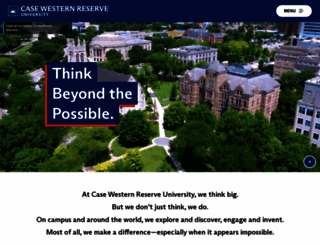Case Western Reserve University: One of the nation's best
Page Load Speed
1.9 sec in total
First Response
243 ms
Resources Loaded
1.2 sec
Page Rendered
542 ms

About Website
Click here to check amazing Case content for United States. Otherwise, check out these important facts you probably never knew about case.edu
Explore Case Western Reserve University: the top-ranked school in Ohio and one of the best research universities in the U.S. Located in Cleveland, Ohio.
Visit case.eduKey Findings
We analyzed Case.edu page load time and found that the first response time was 243 ms and then it took 1.7 sec to load all DOM resources and completely render a web page. This is quite a good result, as only 35% of websites can load faster.